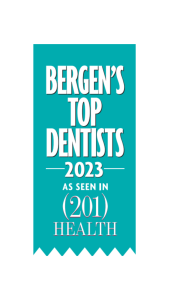It is easy to overlook the fact that the skin and soft tissues supporting your teeth are as important as the actual teeth. Neglecting gum care results in gum infection, also known as periodontal disease, which can decrease quality of life. This blog will explore the causes of gum disease and teach you how to treat and prevent it.
What Exactly is Gum Disease and What are its Symptoms?
Gum disease is an infection and inflammation around the tissues in your mouth that sustains the teeth and its roots. Common symptoms of gum infection or inflammation you can notice include red, swollen, and tender gums. Depending on the severity and the time span of the disease, bleeding while simply brushing your teeth or flossing can occur. Symptoms of loose teeth and crevices between the teeth and gums, bad breath, loose dentures, pus oozing out of the teeth and gums, and jaw alignment also are effects of periodontal disease.
Types of Gum Disease
There are several types of periodontal diseases categorized by the stage and seriousness of the symptoms.
- Gingivitis: This is the first and mildest stage of gum disease. It is noticeable by the reddish color and the swollen, softer gum texture. The gums easily bleed while brushing or flossing the teeth, even without pressure and rough care.
- Mild Periodontitis: The second stage after gingivitis. Periodontal pockets, or the symptoms of gums pulling away from the teeth and creating an empty space or hole between the teeth and gums deepens are visible at this stage. Erosion of the tooth can also happen during this stage.
- Moderate to Advanced Periodontitis: The last and most severe stage of gum disease. Deepened periodontal pockets, erosion of the bone around the teeth and the gums are clearly visible. Because of the teeth losing its sustainability from its gums, there is a high possibility of getting them extracted.
What Leads to Gum Disease?
Preventing gum disease means preventing potential pain and medical fees. Be aware and stick to healthy dental habits to save you from toothache!
- Oral Hygiene: As much as we tend to forget, sticking to the basics is the key to being a healthy individual. Brushing your teeth 2-3 times a day with a fluoride toothpaste, flossing regularly to remove plague will block the entrance to the first stage of gingivitis.
- Tobacco Use: Consistent, long-term smoking habits and chewing tobacco can lead to a higher risk of gum disease. Along with the numerous risks associated with tobacco use, opt for better alternatives and quit smoking.
- Genetics: Genetic predisposition can have a significant impact on one’s health, including gum health. It’s essential to examine your family history and determine if you may be at increased risk for gum disease. If so, consider discussing it with your dentist to find out a better plan for healthy gums.
- Poor Nutrition: Not eating regularly or not meeting the adequate nutritional requirements can result in unhealthy gums. Make sure to keep a balanced nutritional diet for oral health and seek help from professionals when having difficulty with it.
- Hormonal Changes: Hormonal fluctuations can impact much health issues including gum infections and inflammations. Stages of puberty, pregnancy, and environmental or psychological changes can affect your oral health.
Other cases including diabetes, certain medications, habit of clenching your jaw can significantly affect your gums and lead to preliminary stages of gum disease.
How to Treat Gum Disease?
Once you notice the symptoms, seek treatment from dental professionals as soon as possible. Depending on the severity of the symptoms, treatment may differ, however they would go through the same process.
- Plague Removal: Deep cleaning will help remove the plague and tartar stuck beneath the teeth and infected soft tissues. After this procedure, healthy and new tissues will grow and reattach to your teeth. This step is most effective during the gingivitis stage and will help prevent further damage.
- Medication: Your dentist will use medication to cover the periodontal pockets and prescribe antibacterial medications to prevent further infections.
- Surgical Procedures: If symptoms are too severe for nonsurgical procedures, you might have to go through surgery to eliminate the disease. There are several types of surgery, such as periodontal pocket reduction, regenerative surgery, soft tissue graft, and crown lengthening procedures.
Healthy Gums, Healthy Smile!
Although it might not look like it, gums are an essential part of your body and taking care of your gum health is a necessity. If you are experiencing any discomfort with your gums or any other oral health condition, it is crucial to prioritize seeking a dental professional. Delaying action on your gum health can worsen the issue, therefore prompt action is required. With Chestnut Ridge Dental, our skilled expertise will provide the optimal solution and you will regain your bright smile after our treatment. Contact us at (201) 391-4466 for more information and to schedule an appointment today!
Sources:





